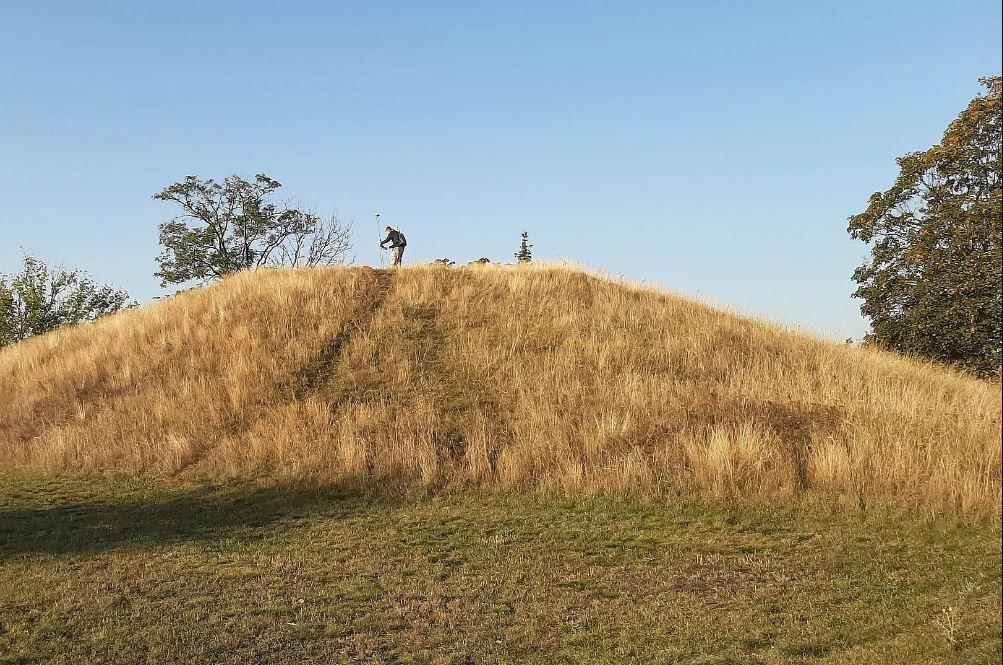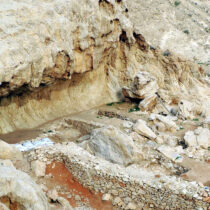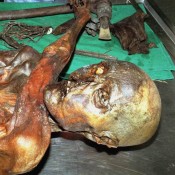The introduction of agriculture and first metal processing are decisive innovations in human history. For quite some time, scientists have been investigating what role demographic development and environmental influences played in these innovative processes. Now, three researchers from the ROOTS Cluster of Excellence at Kiel University have published a study in the international journal PLOS ONE that shows that climate fluctuations and demographic changes were closely linked during the first farming and metal-producing societies in Central Europe (5500 to 3500 years before today).
“Furthermore, our investigations provide evidence that not only the population size in the studied Central European regions fluctuated in correlation with the climate. Changes in social structures were also linked to climate variability,” says archaeologist Dr Ralph Großmann, lead author of the study.
For the current study, Dr Großmann, archaeologist Prof. Dr Johannes Müller and palaeoclimatologist Dr Mara Weinelt evaluated the density and distribution of 14C datings from the region around the Harz Mountains, from the Northern Alpine Foreland and from the region of what is now the Czech Republic and Austria. By means of statistical methods, the data allows conclusions to be drawn about population developments in the past.
To minimise potential sources of error, the study also integrates other data, including specific archaeological information, such as a comparison of settlement and burial data or, on a small-scale, the absolute number of archaeological sites in a particular region.
Similar studies already exist for other areas, but the comparison of three regions on the basis of such a comprehensive database with high temporal resolution is new for Central Europe.
“The resulting demographic curves show a clear correlation to the regional climate data,” emphasises co-author PD Dr Mara Weinelt. In rather warm and humid phases, the population size increased, while in rather cold and dry phases it decreased. This general correlation applies to all study regions.
However, the population development differed in some phases in the individual regions.
“Particularly exciting for the evaluation was the time about 3900 years before today during the Early Bronze Age. At that time, a phase of unfavourable climatic conditions and thus increased environmental stress reached its peak in Europe. Around the Harz region, there is a clear population decline, while in the other two regions the population size still remained stable,” reports Dr Großmannn.
Concurrently, elaborately designed and richly furnished burials suddenly appear in the Harz region. There may be several explanations for this.
“Possibly, the demographically declining societies around the Harz benefited from the boom phases in neighbouring regions due to the exchange of goods. This could have led to a stronger social stratification of the population,” says co-author Professor Johannes Müller. “Or the unfavourable climatic conditions led to a social and economic crisis and thus to higher social inequality”, adds Dr Großmann.
At the same time, the study shows that people in the study regions developed strategies to adapt to less favourable climatic conditions. These included modified housing, the introduction of new, more robust cereals, such as spelt or millet, and more extensive trade networks.
“Ultimately, we cannot relate every change in human activity to climatic changes. But the linkage we see in the three study regions is very clear. It shows that climate was a major factor in population development,” concludes Dr Großmann.




